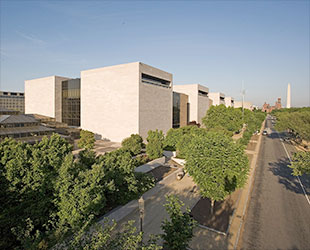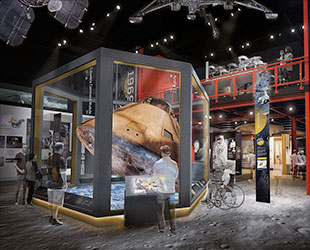April 9, 2018 — Ellen Stofan was eight years old when the first astronauts landed on the moon. Now, almost 50 years later, she has been chosen to head the museum entrusted with the mission's spacecraft and artifacts, filling a role that was first held by a member of the Apollo 11 crew.
Stofan, who was NASA's chief scientist from 2013 to 2016, has been named the director of the Smithsonian's National Air and Space Museum in Washington, DC, effective April 30. Stofan is the seventh person to lead the museum since Apollo 11 astronaut Michael Collins oversaw its founding in 1976, and is the first woman appointed to the position.
"It is an incredible honor to join the National Air and Space Museum family at this important point in [its] history," said Stofan in an April 5 statement announcing her as the new director. "Space and aviation inspire our next generation of explorers, and there is no better place to experience this than at our museums."

National Air and Space Museum in Washington, DC. (Smithsonian) |
Stofan, whose father was a NASA rocket scientist (literally) and center director, drew some of her own inspiration from the institution she now leads. As a college sophomore, she was an intern with the Air and Space Museum's planetary science team, an experience that led her to joining the Jet Propulsion Laboratory (JPL) as a post-doctoral fellow and becoming the deputy project scientist for NASA's Magellan mission to study Venus.
Stofan's research focused on the geology of Venus, Mars, Saturn's moon Titan and Earth.
She was subsequently named chief scientist for JPL's New Millennium Program, leading new technology development for space exploration. She then filled a five-year stint as an honorary professor at University College London in the UK before serving as the senior scientist and vice president for a consulting firm specializing in planetary research.
As NASA's chief scientist, Stofan guided the development of a long-range plan to send humans to Mars, worked on strategies to expand commercial activity in Earth orbit, and supported NASA's science programs in heliophysics, Earth science, planetary science and astrophysics.
"Ellen's scientific background, communication acumen and strategic thinking have positioned her superbly to lead the National Air and Space Museum," said David Skorton, the Smithsonian's Secretary. "Her passion for science coupled with her love of education will ensure that the museum will continue to be a global treasure and world leader through its extensive programming, exhibitions and scholarship."

The Apollo 11 command module, Columbia, will be the centerpiece of the new "Destination Moon" gallery debuting at the National Air and Space Museum in 2021. (Smithsonian) |
Succeeding J.R. "Jack" Dailey, who retired in January after serving 18 years as the John and Adrienne Mars director, Stofan begins her tenure just as the museum's building on the National Mall is set to undergo an extensive multi-year revitalization. The building will receive a complete refacing of its exterior cladding and its mechanical systems will be replaced. The visitor experience will also change with all of the 23 galleries and presentation spaces being updated or completely redone.
Among the renovations is "Destination Moon," a successor to the National Air and Space Museum's original "Apollo to the Moon" gallery. Slated to debut in 2021, the new hall will exhibit Neil Armstrong's lunar spacesuit and the Apollo 11 command module Columbia, the latter currently a part of a touring exhibition through the mission's 50th anniversary in 2019.
